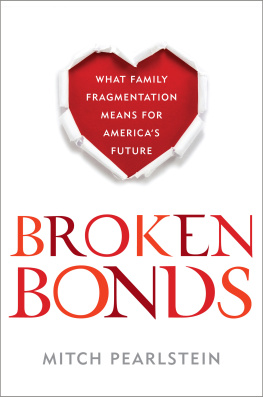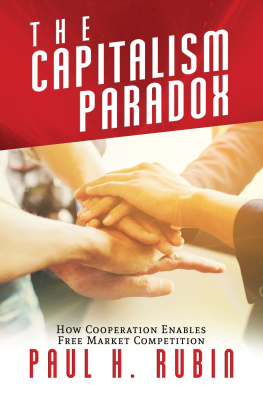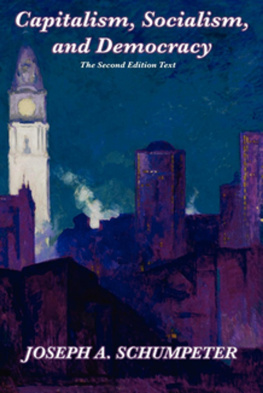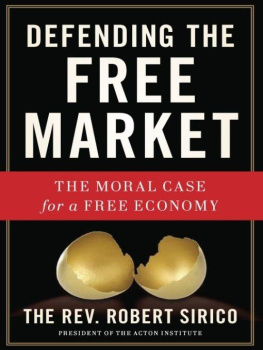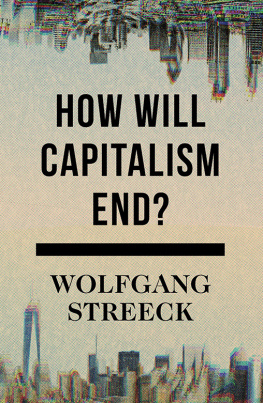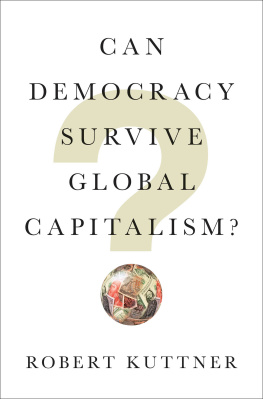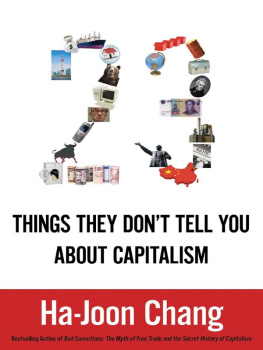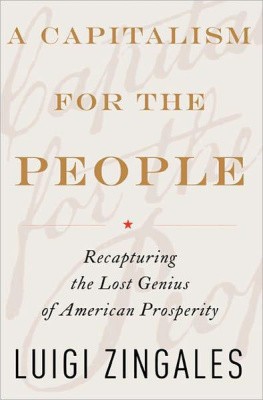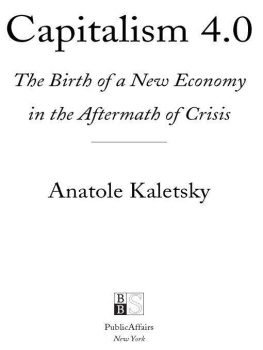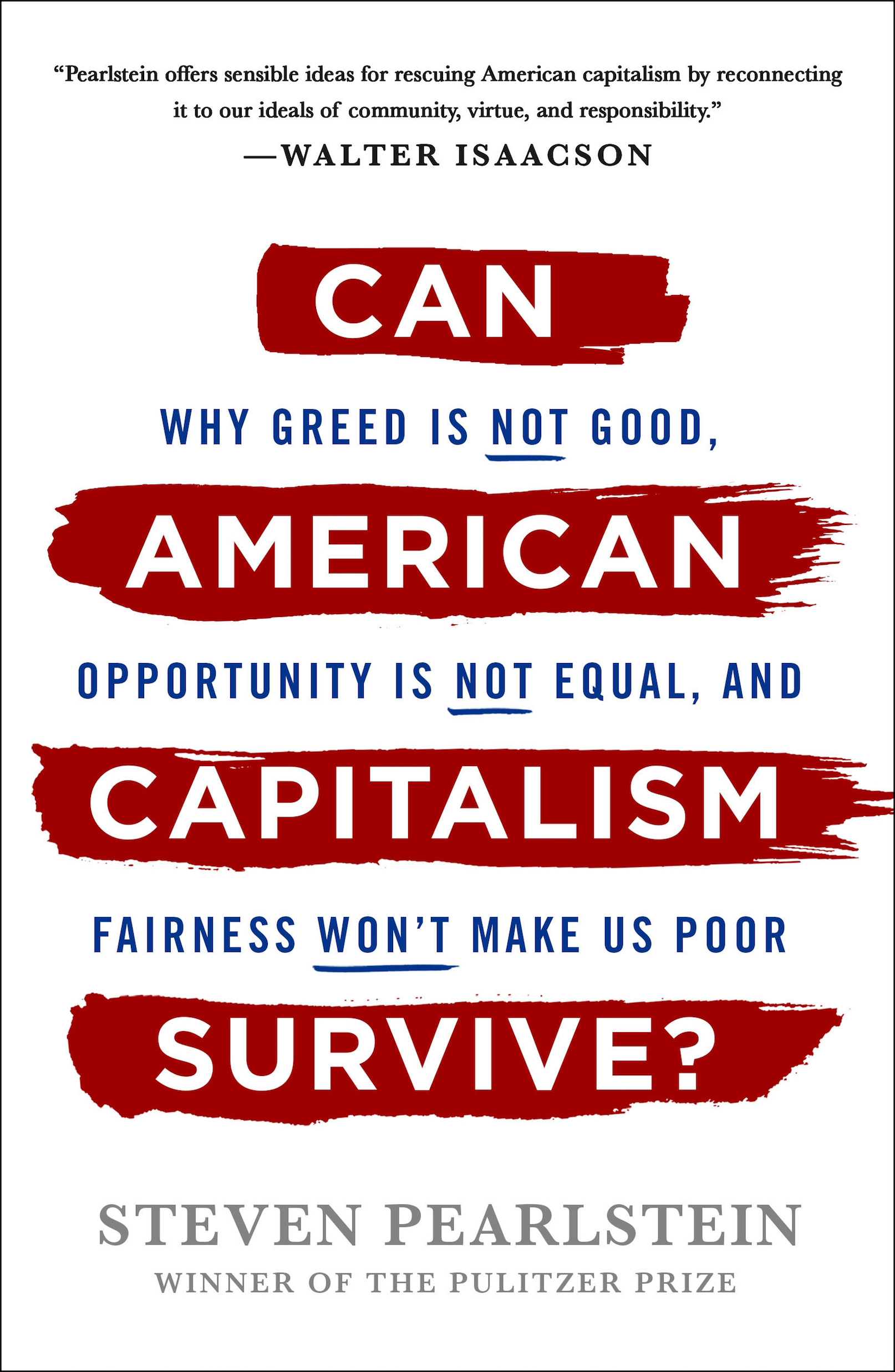Contents
Guide
Pagebreaks of the print version

The author and publisher have provided this e-book to you for your personal use only. You may not make this e-book publicly available in any way. Copyright infringement is against the law. If you believe the copy of this e-book you are reading infringes on the authors copyright, please notify the publisher at: us.macmillanusa.com/piracy.
For Wendy
Who Made Everything Possible
It was only 25 years ago that the world was celebrating the triumph of American capitalism. After a long cold war, communism had been vanquished and discredited, with China, Russia and Eastern Europe seemingly rushing to embrace the market system. America had widened its economic lead over European-style socialism while the once-unstoppable export machine, Japan Inc., had finally hit a wall. Developing countries such as India, Brazil and Russia were moving to embrace the Washington consensus of privatization, deregulation and free trade. Around the world, this embrace of market capitalism would lift more than a billion people from poverty.
In the years since, however, confidence in the superiority of the American system has badly eroded. A global financial crisis that started in Asia and spread to Russia and Latin America shattered the Washington consensus. Americans have lived through the bursting of two financial bubbles, struggled through two serious recessions and toiled through several decades in which almost all of the benefits of economic growth have been captured by the richest 10 percent of households. A series of accounting and financial scandals, a massive government bailout of the banking system, the inexorable rise in pay for corporate executives, bankers and hedge fund managersall of these have generated widespread resentment and cynicism. While some have prospered, many others have been left behind.
A decade ago, 80 percent of Americans agreed with the statement that a free market economy is the best system. Today, it is 60 percent, lower than in China. One recent poll found that only 42 percent of millennials supported capitalism. Even champions of free markets tend to shy away from using the capitalism moniker.
Theyre not rejecting the concept [of capitalism], explained John Della Volpe, polling director at the Institute of Politics at Harvards Kennedy School of Government. The way in which capitalism is practiced today, in the minds of young peoplethats what they are rejecting.
Part of this disquiet has to do with the market systems inability to continue delivering a steadily rising standard of living to the average household, as it had for the previous half century. In the 15-year period from 1953 to 1968, the inflation-adjusted income of the median American family increased by 54 percent. In the 15-year period from 2001 to 2016, the increase was just 4 percent. No wonder that just 37 percent of Americans now believe they will do better financially than their parents, the driving idea behind the American Dream.
But another part of our disquiet reflects a nagging suspicion that our economic system has run off the moral rails, offending our sense of fairness, eroding our sense of community, poisoning our politics and rewarding values that easily degenerate into greed and indifference. The qualities that once made America greatthe optimism, the commitment to equality, the delicate balance between public and private, the sense that were all in this togetherno longer apply.
It has got to the point that we are no longer surprised when employees of a major bank sign up millions of customers for credit cards and insurance they didnt want or even know about, just to make their monthly numbers.
We are reluctantly reconciled to a system that lavishes $800 million in compensation a yearthats $250,000 an houron the head of a private equity firm simply for being clever about buying and selling companies with other peoples money, while half of the employees of those companies still work for $25 an hour or less.
We are now barely shocked when a company tells longtime workers that their jobs are being sent overseas and that they will get a modest severancebut only if they train the foreign workers who will be taking their jobs.
We are both outraged and resigned when yet another corporation renounces its American citizenship just to avoid paying its fair share of taxes to the government that educates its workers, protects its property and builds the infrastructure by which it gets its products to market.
While we may have become desensitized to these individual stories, however, collectively they now color the way we think about American capitalism. In less than a generation, what was once considered the optimal system for organizing economic activity is now widely viewed, at home and abroad, as having betrayed its ideals and its purpose and forfeited its moral legitimacy.
* * *
To understand how we got to this point, we have to travel back to the mid-1970s. After decades of dominating U.S. and foreign markets, many of Americas biggest and most successful corporations had become complacent and lost their competitive edge. They were less efficient, less innovative and less willing to take risks. Excessive government regulation had raised costs and sapped the dynamism of sectors such as transportation, communication, finance and energy, with government officials dictating which companies could compete, what services they could provide, what prices they could charge and what profits they could earn. Overzealous antitrust enforcement had prevented mergers among rivals that would have allowed them to achieve economies of scale. Unions had pushed wages and benefits to unsustainable levels, driving up prices and draining companies of the capital needed for investment and modernization. Loose interest-rate policy at the Federal Reserve and overspending by Congress had triggered double-digit inflation.
All that was happening at a time when European and Japanese exporters were beginning to make inroads into the American market. It began with shoes, clothing and toys, then spread to autos, steel, consumer electronics, computers and semiconductors, cameras, household appliances, chemicals and machine tools. Initially, the appeal of these foreign products was that they were cheaper, but before long these foreign firms began to offer better quality and styling as well. By the time American firms woke up to the competitive challenge, many were already playing catch-up. In a few industries, it was already too late.
With their costs rising and their market share declining, the large blue-chip companies that had dominated Americas postwar economy suddenly found their profits badly squeezedand their share prices falling. Although few remember it today, the Dow Jones index, reflecting the share prices of the 30 largest industrial companies, essentially ran in place for the ten years between 1972 and 1982, resulting in a lost decade for investors. Indeed, it was worse than that. When adjusted for inflation, the Dow lost half its value over that period.
By the mid-1980s, serious people were wondering if the days of American economic hegemony were quickly coming to an end. When Japans Mitsubishi conglomerate purchased Rockefeller Center from the descendants of Americas most celebrated business mogul in 1989, it seemed to many as if the American Century had come to a premature and inglorious end.
The central task of the next quarter century is to regain American competitiveness, declared MIT economist Lester Thurow in a widely read jeremiad, The Zero-Sum Solution . Blue-ribbon panels were commissioned, studies were published, hearings held. In the corridors of government, at think tanks and business schools, on the covers of magazines, there was a sense of urgency about Americas industrial decline and a determination to do something about it. And do something they did.


